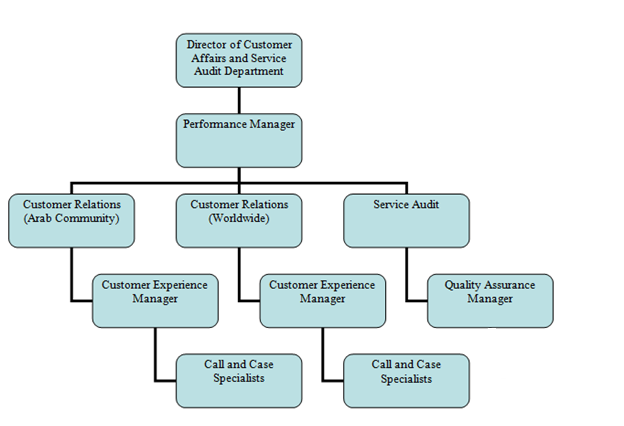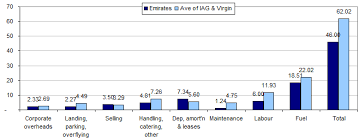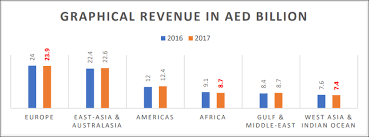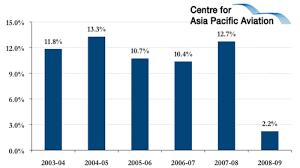Introduction
Environmental analysis is an important aspect of business assessment that serves various purposes in aligning strategic policies within the internal and external surroundings. In David and David’s (2014) opinion, environmental analysis is a fundamental approach incorporated in identifying internal and external elements of any business environment. As a result, environmental evaluation is significant in isolating visible functions, potential threats, weaknesses, and strengths of firms. In addition, the concepts of environmental analysis facilitate the understanding of change within workspaces. Reviewing the operations of Emirates Airline Company familiarizes readers to connect the ideologies of environmental analysis to the existing challenges and changes observed in the running of the aviation service provider. In the case study, the text incorporates the external and internal factor evaluator alongside a market watch, e-Trade, MSN Money, current annual reports, form 10K, MSU Global Edge, and Hoovers in evaluating Emeritus airline company.
Internal Factors
Financial Statements
The financial statements at Emeritus Airline service communicate the insights of performance at the company. The internal assessment of the firm’s operations highlights three primary financial statements to enhance the business’s future position in the competitive aviation market. Income statements, cash flow information, and balance sheets formulated the major elements of the fiscal measurements incorporated in the evaluation of Emeritus Airline Company. The business’s financial health and strengths originate from the review of financial statements as the basic informative tools. According to Malik et al. (2020), the aviation-based business of Dubai realized a 4% change in the revenues earned between 2008-09 and 2009-10 business period. The operating income and other revenues gained in 2008-09were 45231 United Arabs Emirates dirham (AED), while the value earned in 2009-10 was 45404 AED (Alshurideh et al. 2019). Opening profits during the same financial years depicted the organization’s strengths in retaining opening profits. The opening profits in the 2008-09 business period were lower than the margin recorded in 2009-10 reports; the Forbes magazine reported that Emeritus airline company enjoyed 4124 AED and 2745 AED in 2009-10 and 2008-09 reports.
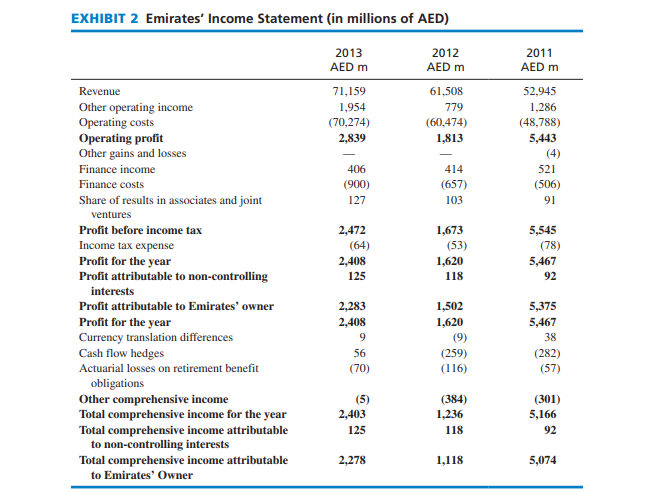
The ownership of the Emeritus airline by the government of Dubai enhances the attainment of aviation services at the firm without internal restrictions. Sadik (2018) highlighted that Emirates Airline enjoys strong backing from the government, a condition that provides conducive business environments for the firm. Even though the corporation faces multiple challenges in the external environment, the regulations by the Dubai government enhance smooth operations. Some external factors like competition only influence the airway business operation in other cities outside Dubai. The latest report shows that 56% of customers are pleased with the service provided at Emirates; therefore, the organization enjoys a massive following within Dubai and across 161 routes (David & David, 2014). Enormous responses from customers on the positive relationship with Emirates increase the number of new clients linked to the company; the firm’s growth rates lean on the portfolio of the business and how its customer support team interact with the majority of passengers.
Properties
The Emirates is one of the fastest-growing airlines in the world. The firm’s operations in over 150 destinations are oriented toward the availability of resources and particular property ownership. The company has faced criticism regarding its diversity in numerous markets; the organization’s eternal assessment classifies the criticism as a weakness, while Sadik (2018) views the business approach as an external assessment variable. The structure and employment of workers at Emirates provide great environments for diversity. David and David (2014) echoed that the successful position of the Airline company depends on its brands; apart from airway services, the entity operates in airport services, catering, tour operations, event organization, and engineering services. The emirates group, the Airline’s parent company, has more than fifty subsidiaries, which boosts the financial budgeting of the aviation services.
Besides, Emirates has four subsidiaries, which align with the global transport system. The flexibility of the management to incorporate more than a single brand puts the Airline enterprise in a better position to compete against its opponents. By the end of the fiscal year 2020, the Emirates employed about 60000 staff David and David (2014); the recruitment team included 5376 oversee station managers, 3316 engineers, 21789 cabin crew and 4313 deck crew officials (David & David, 2014). The organization can employ many individuals because it has adequate resources and funding to maintain the large population.
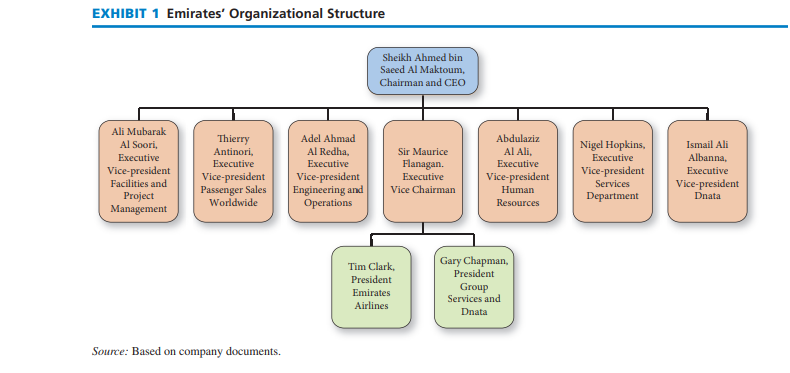
External Factors
Risk Analysis
Aviation businesses are hard to maintain; however, the Emirates has survived the challenging and competitive transportation industry for the past three decades. The organization utilizes the resources sparingly to accommodate every employee and maintain the services of the aeroplanes and other engineering demands needed in the business. Security risks formulate some of the major shortcomings of the organization; the chief executive officer of the institute acknowledges the threats that minimizes the performance of the business. External sources prevent the organization from attaining the set goals and objectives. For instance, David & David (2014) suggested the downfall of Emirates with the possibility of strong competitors in the market niche. Etihad and Qatar airways are giving the Emeritus difficult times in providing similar services. The firm fears interacting with the two entities because they strongly build a conducive business environment and a supportive customer foundation. Unlike in 1985, Emirates Airlines is battling stronger competitors for the same market; the organization’s diversity in other service providers originated with the stiff competition in the aviation industry.
Ethical Factors
Ethics is an integral element in the synthesis of external environmental analysis. The Emirates airline owners and top leaders incorporate the aspects of ethics in the management of employees and collaboration with well-wishers and sponsors. The distinct concept of morality and ethics within organizations limits the enactment of ethical policies uniformly. Emirates airline is one such company that faces several ethical issues in the day-to-day running of business activities. Emirates Group has zero tolerance for approaches to slavery; the organization is committed to acting ethically across the domain industry. Ahmed bin Saed, the chief executive officer at the Emirates airline, stresses integrity as a key element in eliminating unethical business dealings. However, the organization was accused of denying passengers compensation for what they legally pay for service access by Civil Aviation Authority (Malik et al., 2020). Emirates only provide resting and relaxation services; the team does not offer accommodation for passengers.
Demographic Elements
The choice of travelling with Emirates aligns with customers’ demographic demands. The organization has been blamed for neglecting middle- and low-class passengers based on their package prices. The annual reports released in June 2021 indicated that age, occupation, family status, gender, and cultural backgrounds influence the choices of customers to board the Emirates airline (Alshurideh et al., 2019). On the one hand, wealthy families find the company’s marketing strategy convenient and reliable. On the other hand, middle-class passengers have challenged booking executive seats for flights. The differences in family income and occupation regulate the Emirate’s target market.
Conclusion
Environmental analysis of the Emeritus Airline company is characterized by assessing external and internal business elements. Internal factors impact the company’s operations from within its settings, while external elements f analysis focus on the uncontrollable conditions in the market mix. Emirates enjoys a huge following, but it still experiences major ethical and social issues that reduce its effectiveness in providing quality aviation services. The External Factor Evacuator and Internal Factor Evacuator results illustrate the need for better strategic policies and regulations in the company’s management. The firm’s major threats and weaknesses might drag the company’s efficacy to maximize its opportunities and strengths in the future.
References
Al Saed, R., Upadhya, A., & Abu Saleh, M. (2020). Role of airline promotion activities in destination branding: Case of Dubai vis-à-vis Emirates airline. European Research on Management and Business Economics, 26(3), 121-126. Web.
Alshurideh, M., Alsharari, N. M., & Al Kurdi, B. (2019). Supply chain integration and customer relationship management in airline logistics. Theoretical Economics Letters, 09(02), 392-414. Web.
David, F. R., & David, F. (2014). Strategic management: Concepts and cases.
Sadik, R.M. (2018). Implementation of total quality management in the airline (Case study Emirates airline). International Journal of Computer Science and Technology, 7(5), 22-25. Web.
Malik, S., El-Sayed, H., Khan, M. A., & Alexander, H. (2020). Application of containerized Microservice approach to airline sentiment analysis. 2020 14th International Conference on Innovations in Information Technology (IIT). Web.
Webber, T. (2022). Airline microeconomics. Cambridge Scholars Publishing.
Appendix
